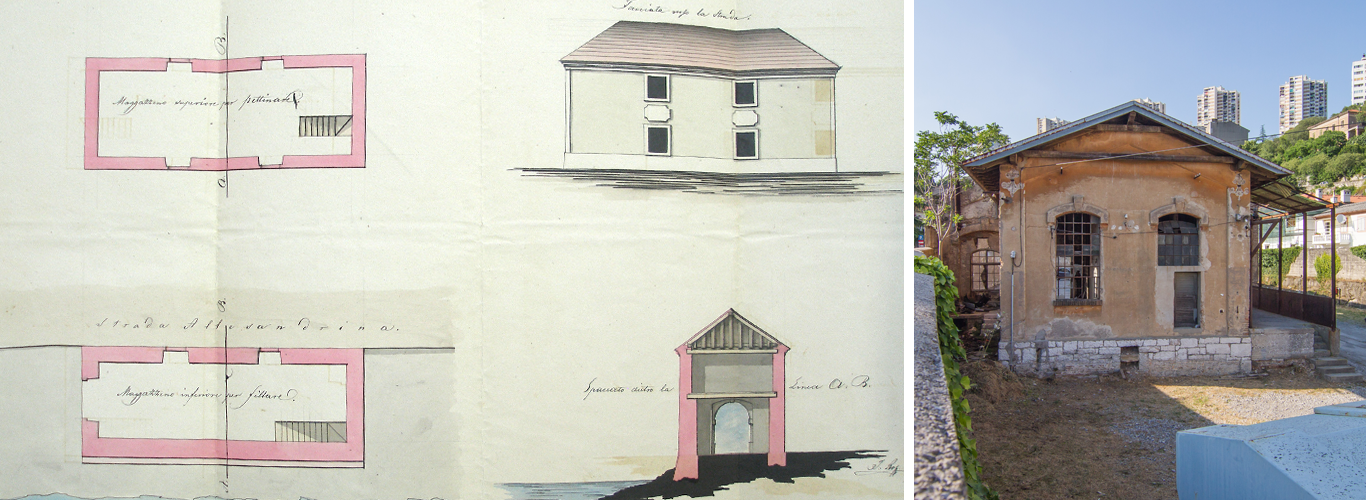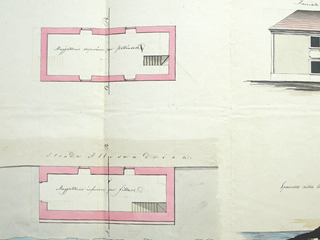Rope Factory of Rijeka - operational building
address: PotokPeriod: Historicism
Kind: Immovable material heritage
Century: 18
Year: 1764
Purpose: industrial
In 1764, Nicolò Crespi, a native of Rimini, opened a manufacturing plant for ropes in Rijeka. The company’s main products were ropes for ships. Sources show that the plant had sixteen employees in 1802. Giovanni Sirola, who gained ownership of the factory around 1860, greatly contributed to the modernization of the factory. Sirola gave the idea of moving the manufacturing production to a new, larger building and, in 1901, he put Emilio Ambrosini in charge of the project. It is a simple rectangular building with a prominent central area where the rope spinning section was located. The integrity of the facility is split by a series of large windows with a mild semi-circular arch. The decorations used by Ambrosini indicate very modest but noticeable Art Nouveau elements. The building is now in a degraded state with no roof. It represents everything that was preserved from the former Rope Factory of Rijeka. At the beginning of the 20th century, the factory manufactured ropes for the Austro-Hungarian fleet in Pula, Rijeka’s Torpedo Factory and the Shipyard 3. Maj. During the World War I, the factory experienced a crisis from which it struggled to come out, only to enter a new crisis immediately after World War II. The company’s owners started rotating and, in the 1880s, the entire production was moved to Škurinje. The entire plant was destroyed during the construction of shopping centres.
Valorization:
The remains of the Rijeka Rope Plant are still not under conservationist protection. The building is in an extremely poor condition, without the roof, subject to further decay. It now contains a parking space.
Bibliography:
DARI, PR-1, kutija 246, fascikl VIII, 1824.
Pustišek, Deborah, Emilio Ambrosini, Muzej grada Rijeke, 2011.
Rotim Malvić, Jasna, Industrija, u: Arhitektura secesije u Rijeci, MMSU, Rijeka, 2007.




